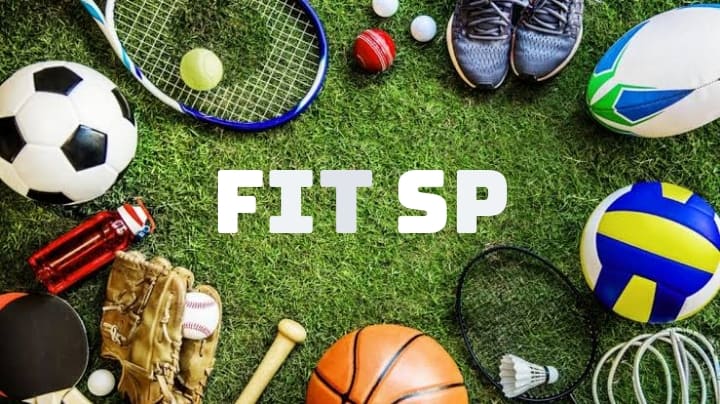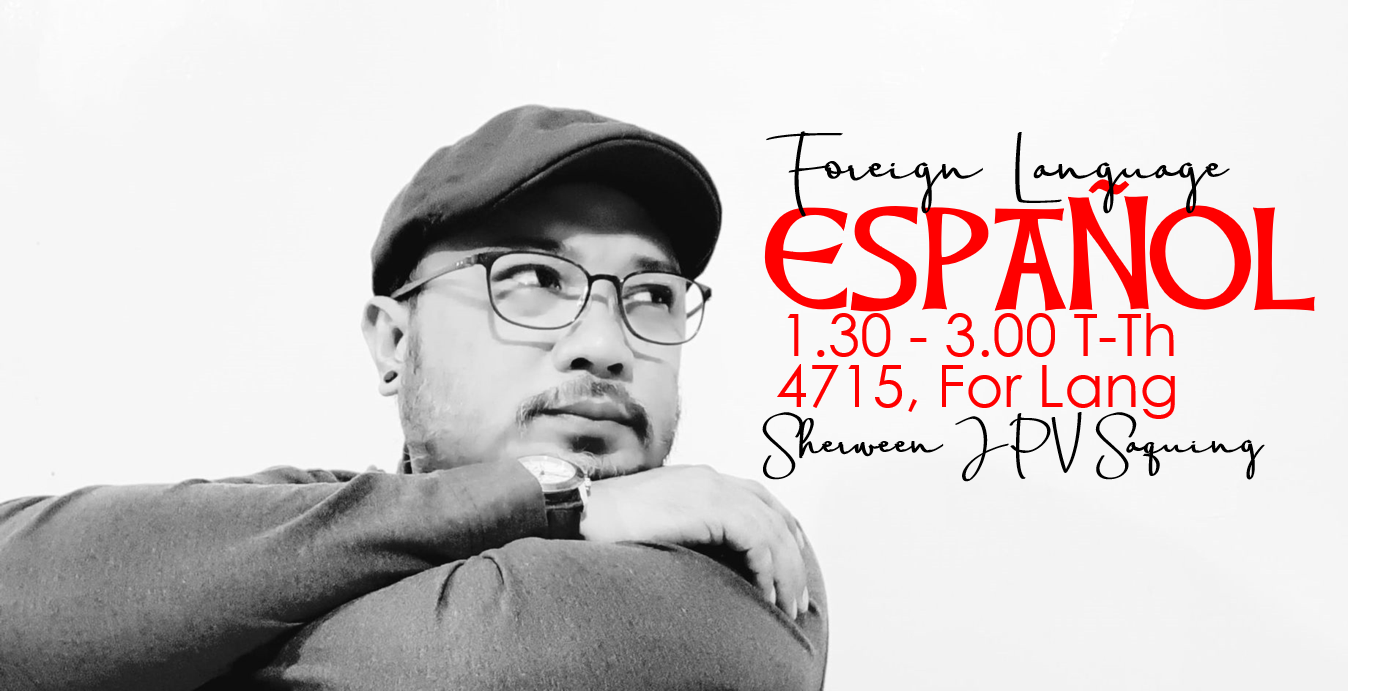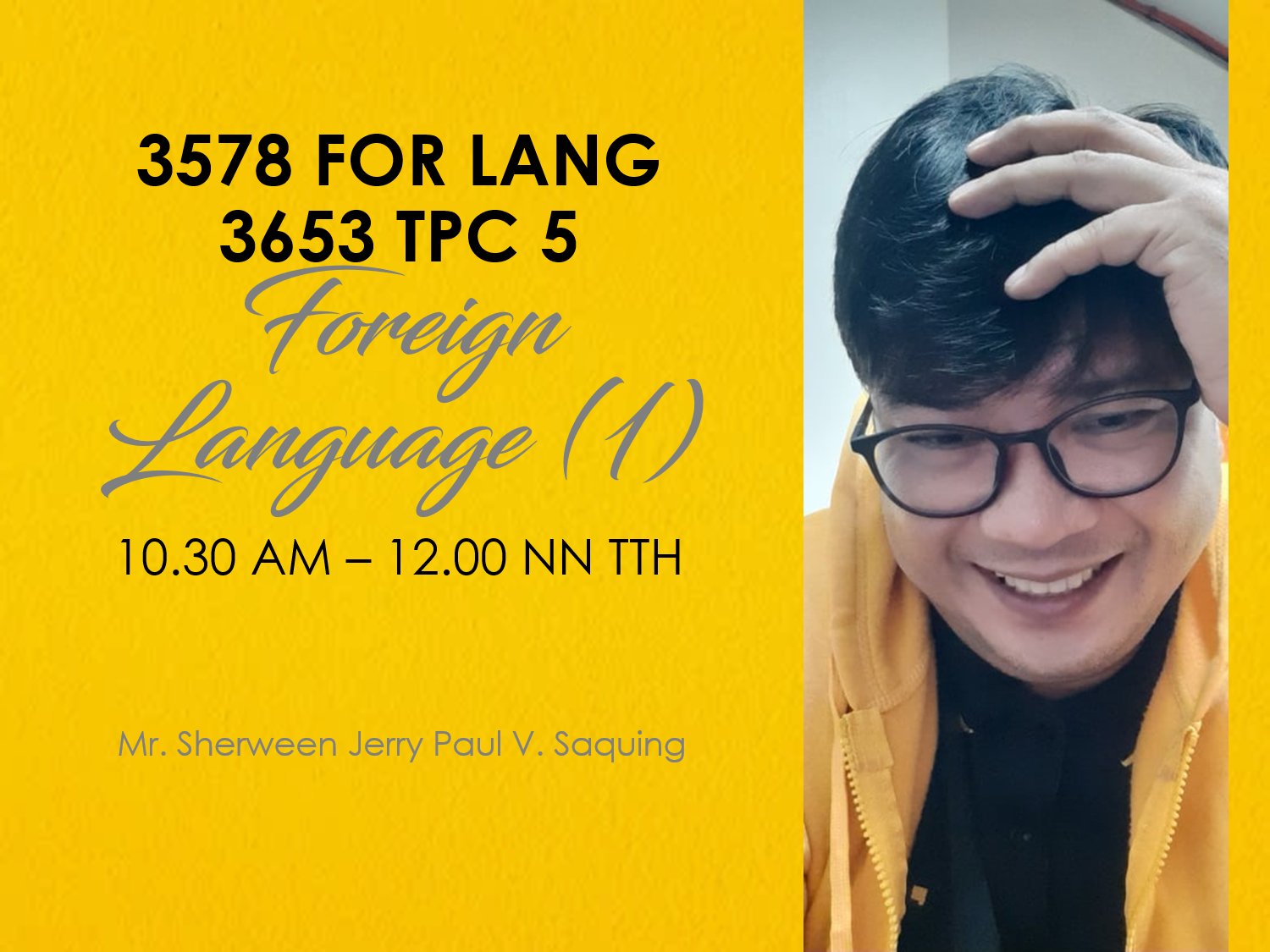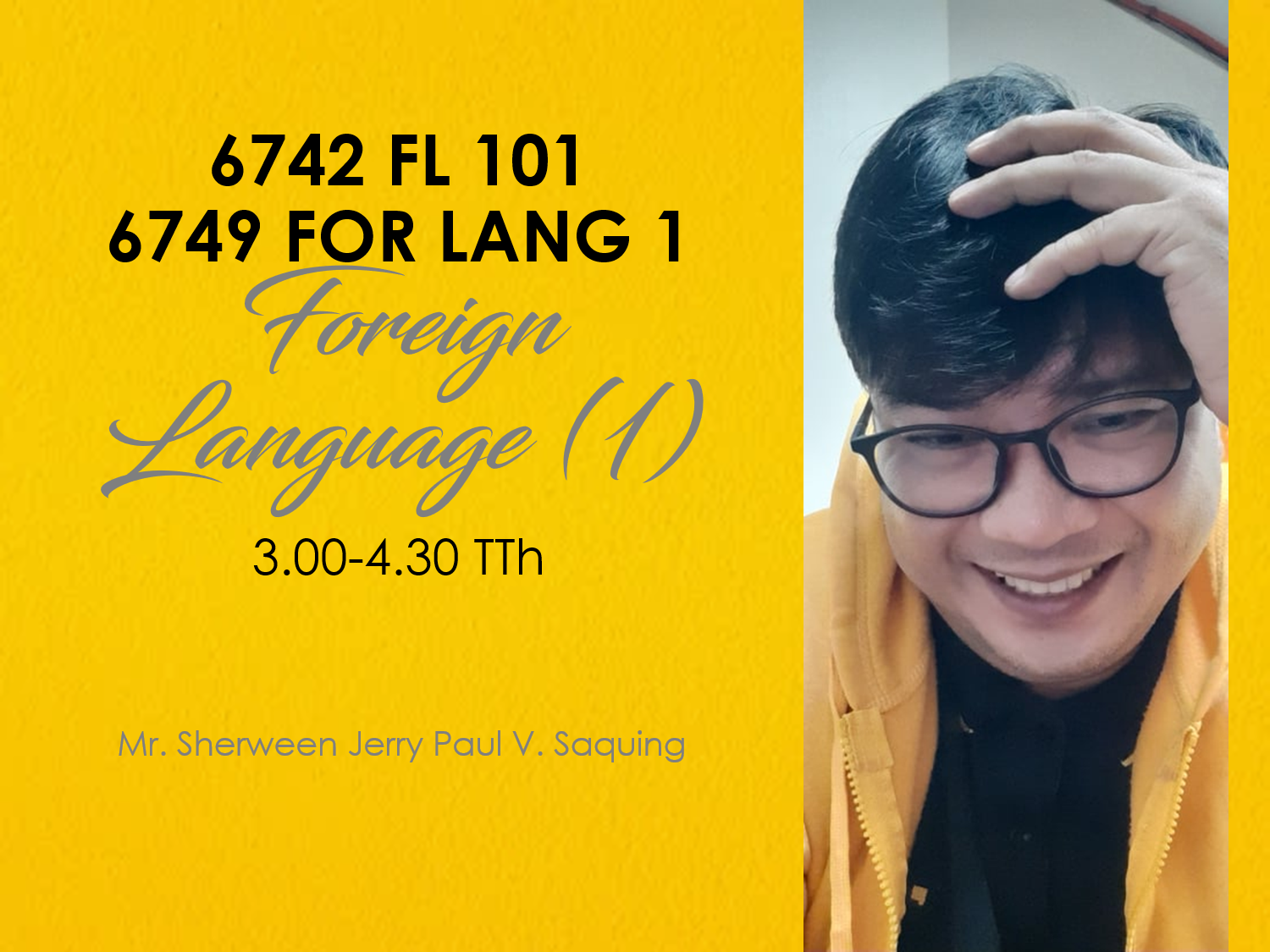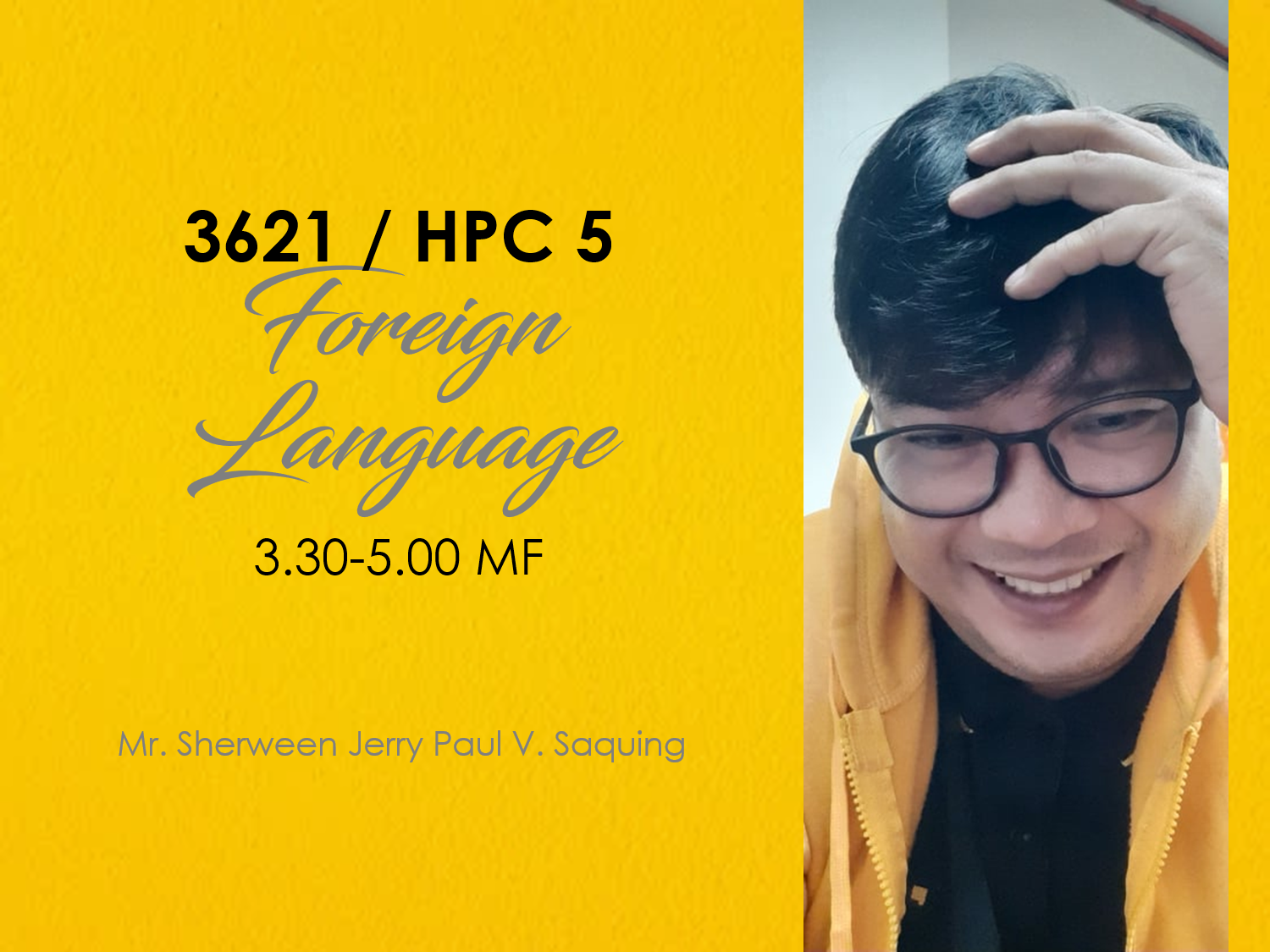Search results: 3380
- Teacher: Felipe Nantes
- Enrolled students: 6
Course Description
PATH FIT-CS 2 Physical Activity Towards Health and Fitness – (Combative Sports) This course deals with the learning of the basic skills, rules of the discipline and their application in actual game. It presents the application of techniques and strategies with regard to fighting forms, stance and posture, footwork, defense and disarming techniques. The characteristics and principles of a good fighter are also discussed here. Students are expected to gain the competency skills of the combative sports being covered.
- Teacher: LEILANIE CRISTIE SAGABAEN
- Enrolled students: 43
This course deals with the learning of the basic skills, rules of the discipline and their application in actual game. It presents the application of techniques and strategies with regard to fighting forms, stance and posture, footwork, defense and disarming techniques. The characteristics and principles of a good fighter are also discussed here. Students are expected to gain the competency skills of the combative sports being covered.
- Teacher: MARY GRACE MEDINA BULATAO
- Enrolled students: 49
This course deals with the learning of the basic skills, rules of the discipline and their application in actual game. It presents the application of techniques and strategies with regard to fighting forms, stance and posture, footwork, defense and disarming techniques. The characteristics and principles of a good fighter are also discussed here. Students are expected to gain the competency skills of the combative sports being covered.
- Teacher: MARY GRACE MEDINA BULATAO
- Enrolled students: 78
This course deals with the learning of the basic skills, rules of the discipline and their application in actual game. It presents the application of techniques and strategies with regard to fighting forms, stance and posture, footwork, defense and disarming techniques. The characteristics and principles of a good fighter are also discussed here. Students are expected to gain the competency skills of the combative sports being covered.
- Enrolled students: No students enrolled in this course yet
This course deals with the concepts of Exercise Program and basic movement and rhythmic skills used in learning and creating simple natural dances. It includes basic steps and dance needed in the correct interpretation and performance of Philippine folk dances. Social dances are also introduced.
- Teacher: MARK ERROL CUTARAN
- Enrolled students: 55
This course deals with the concepts of Exercise Program and basic movement and rhythmic skills used in learning and creating simple natural dances. It includes basic steps and dance needed in the correct interpretation and performance of Philippine folk dances. Social dances are also introduced.
- Teacher: MARY GRACE MEDINA BULATAO
- Enrolled students: 49
This course may be described as SPORTS SKILLS activities. It pertains to various activities with special kind of skill particularly needed in playing of highly organized games which are governed with rules and regulations such as Individual/Dual Sports and Team Sports. The emphasis is the development of a certain degree of expertise in the organization, officiating, playing and scheduling of these games depending on one’s needs, interest and aptitudes. It also helps/enriches students for proper adaptation of time particularly scheduling of games during a tournament in the school or in their community or locality.
- Enrolled students: 42
- Teacher: JOY AGRIMOR
- Enrolled students: 16
- Teacher: JESUSA ANA MARIA JACALNE
- Enrolled students: 25
- Teacher: JOHN MICHAEL IBARRA
- Enrolled students: 3
Spanish (español), also called Castilian, is a Romance language that originated in Castille, a region in Spain. There are approximately 407 million people speaking Spanish as a native language, making it the second-most-spoken language by number of native speakers after Mandarin. Spanish has the largest number of native speakers of any Indo-European language in the world, the largest language family on Earth. It is one of the six official languages of the United Nations, and is used as an official language by the European Union.
This course studies the Spanish language used as daily conversation in Hispanic countries. It focuses on basic grammar and sentence structures, enabling the learner to immerse himself in conversational Spanish. Thorough discussions of Philippine history in the Spanish context and contemporary Spanish history and culture are included in the course. Lectures and exercises are enhanced with showings of Spanish films and documentaries, as well as other media of communication. At the end of the course, the student shall be able to appreciate Spanish language and culture, and how they affect the quotidian living of a Filipino engaged in the local community and in the world.
- Teacher: SHERWEEN JERRY PAUL SAQUING
- Enrolled students: No students enrolled in this course yet
- Teacher: EARL ALAN CURA
- Enrolled students: 15
- Teacher: EARL ALAN CURA
- Enrolled students: 35
Spanish (español), also called Castilian, is a Romance language that originated in Castille, a region in Spain. There are approximately 407 million people speaking Spanish as a native language, making it the second-most-spoken language by number of native speakers after Mandarin. Spanish has the largest number of native speakers of any Indo-European language in the world, the largest language family on Earth. It is one of the six official languages of the United Nations, and is used as an official language by the European Union.
This course studies the Spanish language used as daily conversation in Hispanic countries. It focuses on basic grammar and sentence structures, enabling the learner to immerse himself in conversational Spanish. Thorough discussions of Philippine history in the Spanish context and contemporary Spanish history and culture are included in the course. Lectures and exercises are enhanced with showings of Spanish films and documentaries, as well as other media of communication. At the end of the course, the student shall be able to appreciate Spanish language and culture, and how they affect the quotidian living of a Filipino engaged in the local community and in the world.
- Enrolled students: No students enrolled in this course yet
- Enrolled students: No students enrolled in this course yet
Spanish (español), also called Castilian, is a Romance language that originated in Castille, a region in Spain. There are approximately 407 million people speaking Spanish as a native language, making it the second-most-spoken language by number of native speakers after Mandarin. Spanish has the largest number of native speakers of any Indo-European language in the world, the largest language family on Earth. It is one of the six official languages of the United Nations, and is used as an official language by the European Union.
This course studies the Spanish language used as daily conversation in Hispanic countries. It focuses on basic grammar and sentence structures, enabling the learner to immerse himself in conversational Spanish. Thorough discussions of Philippine history in the Spanish context and contemporary Spanish history and culture are included in the course. Lectures and exercises are enhanced with showings of Spanish films and documentaries, as well as other media of communication. At the end of the course, the student shall be able to appreciate Spanish language and culture, and how they affect the quotidian living of a Filipino engaged in the local community and in the world.
- Teacher: SHERWEEN JERRY PAUL SAQUING
- Enrolled students: 18
- Enrolled students: No students enrolled in this course yet
Spanish (español), also called Castilian, is a Romance language that originated in Castille, a region in Spain. There are approximately 407 million people speaking Spanish as a native language, making it the second-most-spoken language by number of native speakers after Mandarin. Spanish has the largest number of native speakers of any Indo-European language in the world, the largest language family on Earth. It is one of the six official languages of the United Nations, and is used as an official language by the European Union.
This course studies the Spanish language used as daily conversation in Hispanic countries. It focuses on basic grammar and sentence structures, enabling the learner to immerse himself in conversational Spanish. Thorough discussions of Philippine history in the Spanish context and contemporary Spanish history and culture are included in the course. Lectures and exercises are enhanced with showings of Spanish films and documentaries, as well as other media of communication. At the end of the course, the student shall be able to appreciate Spanish language and culture, and how they affect the quotidian living of a Filipino engaged in the local community and in the world.
- Teacher: SHERWEEN JERRY PAUL SAQUING
- Enrolled students: 64
Spanish (español), also called Castilian, is a Romance language that originated in Castille, a region in Spain. There are approximately 407 million people speaking Spanish as a native language, making it the second-most-spoken language by number of native speakers after Mandarin. Spanish has the largest number of native speakers of any Indo-European language in the world, the largest language family on Earth. It is one of the six official languages of the United Nations, and is used as an official language by the European Union.
This course studies the Spanish language used as daily conversation in Hispanic countries. It focuses on basic grammar and sentence structures, enabling the learner to immerse himself in conversational Spanish. Thorough discussions of Philippine history in the Spanish context and contemporary Spanish history and culture are included in the course. Lectures and exercises are enhanced with showings of Spanish films and documentaries, as well as other media of communication. At the end of the course, the student shall be able to appreciate Spanish language and culture, and how they affect the quotidian living of a Filipino engaged in the local community and in the world.
- Teacher: SHERWEEN JERRY PAUL SAQUING
- Enrolled students: 56



![FIT CS 5135/350<span class="highlight">7</span> Physical Activity Towards Health and Fitness (Combative Sports) [5135] BSN 1E 1:30-2:30 MF (Merged with FIT CS [350<span class="highlight">7</span>] BSBA FM1A)](https://lms.smu.edu.ph/pluginfile.php/193698/course/overviewfiles/140379534_1727756754064052_528368817475782894_n.jpg)


